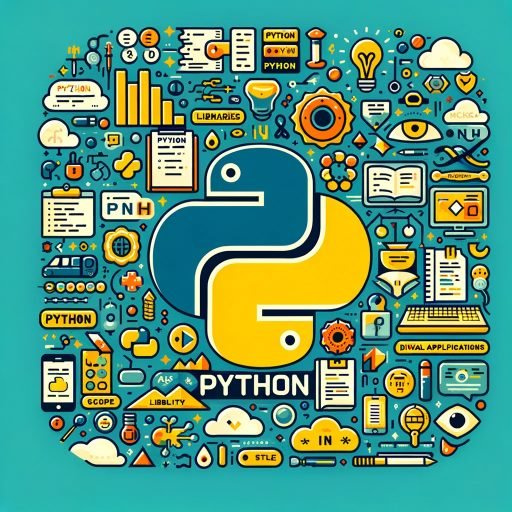Week 6- Learning Python With Chat GPT & Google Colab Chapters 5-7
Chapter 5 - Operators
Chapter 5 focuses on Operators, operators in Python are symbols used to perform various operations on variables and values. Operators are very essential to a lot of the operations that are being carried out on variables and values within Python. This is what they are categorized into:
Arithmetic Operators:
- Addition (+)
- Subtraction (-)
- Multiplication (*)
- Division (/)
Comparison Operators:
- Equal (==)
- Not equal (!=)
- Greater than (>)
- Less than (<)
- Greater than or equal to (>=)
- Less than or equal to (<=)
Logical Operators:
- and
- or
- not
Bitwise Operators:
- Bitwise AND (&)
- Bitwise OR (|)
Additional operators include Modulus (%), Exponentiation (**), and Floor Division (//).
Example code demonstrates arithmetic operations using these operators in Python.

Chapter 6 - Functions in Python
Chapter 6 focuses on Python functions, illustrating how they can simplify complex tasks by breaking them down into smaller, more manageable parts. The chapter covers defining functions, calling them, setting default argument values, and using return statements with variables. Additionally, it offers a guide on how to implement these functions in Google Colab and through ChatGPT. Functions in Python are blocks of reusable code designed for specific tasks, aiding in breaking down complex tasks and reusing code.
Defining a Function:
- Use
defkeyword followed by function name and colon. - Can take input arguments and return values.
- Use
Calling a Function:
- Use function name followed by parentheses.
Default Argument Values:
- Provide default values for function arguments.
Examples showcase defining, calling functions, and using return statements with variables.
Chapter 7 introduces modules in Python, which are essentially "files" containing Python code. Many Python packages already include built-in modules. The chapter offers insights into utilizing these modules within ChatGPT and Google Colab. Modules in Python are files containing Python code, including functions, classes, and variables. They can be built-in or third-party.
Built-in Modules:
- math
- os
- sys
- re
- datetime
- random
- json
- collections
To use a module, import it using import statement, and for specific functions or variables, use from ... import .... Aliases can be used to shorten module names.
Example using the re module demonstrates finding email addresses in a text using regular expressions.
Modules and Libraries
Modules are single files containing Python definitions, while libraries are collections of modules packaged together for a specific purpose.
Differences:
- Scope: Module (single file), Library (across multiple files).
- Functionality: Module (related functions/classes/variables), Library (broader functionality).
- Usage: Module (imported), Library (installed as third-party package).
- Dependency: Module (may or may not have dependencies), Library (often has dependencies).
In summary, modules organize related functionality in a single file, while libraries organize across multiple files, providing a broader range of functionality.
Comments
Post a Comment